
Rekata Bay, also known as Suavanau, is a bay located on the northeast coast of Santa Isabel Island in the Solomon Islands between Santa Isabel and Papatura Island.

Rekata Bay, also known as Suavanau, is a bay located on the northeast coast of Santa Isabel Island in the Solomon Islands between Santa Isabel and Papatura Island.
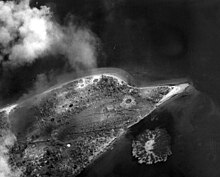
Before the Second World War a copra plantation was built at Suavanau Point by Burns, Philp & Company Limited, known as the Suavanau Plantation.
During the war, the Japanese Imperial Navy constructed a seaplane base at Rekata Bay in the middle of 1942. It was used by R-Area Air Force as a forward base for offensive operations, mainly the nightly Washing Machine Charlie raids on Henderson Field, Guadalcanal. It was also used as an emergency landing and ditching area for aircraft damaged during the Battle of Guadalcanal. The base was defended by 3,100 troops of the 7th Combined Special Naval Landing Force and III Battalion, 23rd Infantry Regiment, 6th Division. The base was bombed by U.S. forces from August 1942 to August 1943. In the following month, the Japanese evacuated the base. Large bomb craters are still visible. A U.S. Navy team flew in during 1943 and examined 15 wrecked Japanese aircraft. A single PBY from No. 6 Squadron RNZAF finally visited the abandoned base on 28 August 1945, losing a man, who was possibly taken by a saltwater crocodile. [1]
In the 1990s a small earth 2,900-foot airstrip was built at Suavanau Point.

The Guadalcanal campaign, also known as the Battle of Guadalcanal and codenamed Operation Watchtower by American forces, was a military campaign fought between 7 August 1942 and 9 February 1943 on and around the island of Guadalcanal in the Pacific theater of World War II. It was the first major land offensive by Allied forces against the Empire of Japan.
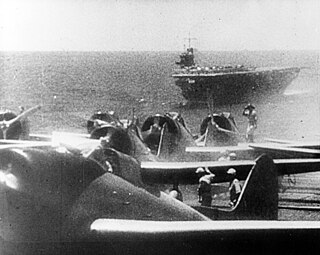
The Aichi D3A is a World War II carrier-borne dive bomber. It was the primary dive bomber of the Imperial Japanese Navy (IJN) and was involved in almost all IJN actions, including the attack on Pearl Harbor.

The naval Battle of the Eastern Solomons took place on 24–25 August 1942 and was the third carrier battle of the Pacific campaign of World War II and the second major engagement fought between the United States Navy and the Imperial Japanese Navy (IJN) during the Guadalcanal campaign. As at the Battle of the Coral Sea and the Battle of Midway, the ships of the two adversaries were never within sight of each other. Instead, all attacks were carried out by carrier-based or land-based aircraft.

Tulagi, less commonly known as Tulaghi, is a small island in Solomon Islands, just off the south coast of Ngella Sule. The town of the same name on the island was the capital of the British Solomon Islands Protectorate from 1896 to 1942 and is today the capital of the Central Province. The capital of what is now the state of Solomon Islands moved to Honiara, Guadalcanal, after World War II.

The Battle of the Santa Cruz Islands, fought during 25–27 October 1942, sometimes referred to as the Battle of Santa Cruz or Third Battle of Solomon Sea, in Japan as the Battle of the South Pacific, was the fourth aircraft carrier battle of the Pacific campaign of World War II. It was also the fourth major naval engagement fought between the United States Navy and the Imperial Japanese Navy during the lengthy and strategically important Guadalcanal campaign. As in the battles of the Coral Sea, Midway, and the Eastern Solomons, the ships of the two adversaries were rarely in sight or gun range of each other. Instead, almost all attacks by both sides were mounted by carrier- or land-based aircraft.

USS De Haven (DD-469) was a Fletcher-class destroyer of the United States Navy, the first Navy ship named for Lieutenant Edwin J. De Haven USN (1819–1865). De Haven was the first Fletcher-class ship lost in World War II, having been in commission only 133 days.
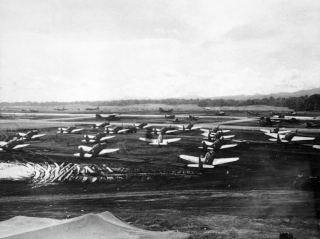
Cactus Air Force refers to the ensemble of Allied air power assigned to the island of Guadalcanal from August 1942 until December 1942 during the most heavily contested phases of the Guadalcanal Campaign, particularly those operating from Henderson Field. The term "Cactus" comes from the Allied code name for the island. In 1943, the Cactus Air Force was absorbed into AirSols, a joint command of Allied air units in the Solomon Islands.

Tenryū was the lead ship in the two-ship Tenryū class of light cruisers of the Imperial Japanese Navy. Tenryū was named after the Tenryū River in Nagano and Shizuoka prefectures.
The Shortland Islands is an archipelago of Western Province, Solomon Islands, at 6.92°S 155.88°E. The island group lies in the extreme north-west of the country's territory, close to the south-east edge of Bougainville Island, Papua New Guinea.
Murasame was the third of ten Shiratsuyu-class destroyers, and was built for the Imperial Japanese Navy under the "Circle One" Program. This vessel should not be confused with the earlier Russo-Japanese War-period Harusame-class torpedo boat destroyer with the same name.

Santa Isabel is the largest island in Isabel Province, Solomon Islands. It is also the longest island, with the third largest surface area, in the country.
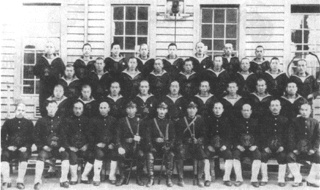
The invasion of Tulagi, on 3–4 May 1942, was part of Operation Mo, the Empire of Japan's strategy in the South Pacific and South West Pacific Area in 1942. The plan called for Imperial Japanese Navy troops to capture Tulagi and nearby islands in the British Solomon Islands Protectorate. The occupation of Tulagi by the Japanese was intended to cover the flank of and provide reconnaissance support for Japanese forces that were advancing on Port Moresby in New Guinea, provide greater defensive depth for the major Japanese base at Rabaul, and serve as a base for Japanese forces to threaten and interdict the supply and communication routes between the United States and Australia and New Zealand.

Shortland Island is the largest island of the Shortland Islands archipelago, in the Western Province of Solomon Islands, at 7°3′S155°45′E.

Chitose (千歳) was a warship of the Imperial Japanese Navy that served from 1938 to 1944, seeing service as a seaplane carrier and later as a light aircraft carrier during World War II. In her initial guise as a seaplane carrier, she first saw service during the Second Sino-Japanese War in 1938, and subsequently played a key role in the Imperial Japanese Navy's development of a network of seaplane bases on the islands of the Pacific Ocean. After the outbreak of World War II in the Pacific, she took part in the Philippines campaign, the Dutch East Indies campaign, the Battle of Midway, and the Guadalcanal campaign, during which she was damaged in the Battle of the Eastern Solomons and also saw service related to the Battle of Cape Esperance.

The second USS Mackinac (AVP-13) was a United States Navy Barnegat-class small seaplane tender in commission from 1942 to 1947 that saw service during World War II. After the war, she was in commission in the United States Coast Guard from 1949 to 1967 as the cutter USCGC Mackinac (WAVP-371), later WHEC-371, the second ship of the Coast Guard or its predecessor, the United States Revenue Cutter Service, to bear the name.
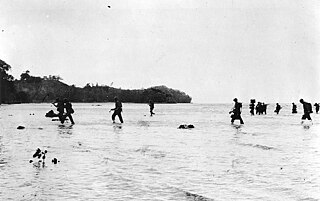
The Battle of Tulagi and Gavutu–Tanambogo was a land battle of the Pacific campaign of World War II, between the forces of the Imperial Japanese Navy and Allied ground forces. It took place 7–9 August 1942 on the Solomon Islands, during the initial Allied landings in the Guadalcanal campaign.

The Yokohama Air Group was an aircraft and airbase garrison unit of the Imperial Japanese Navy Air Service during the Pacific campaign of World War II.
VPB-54 was a Patrol Bombing Squadron of the U.S. Navy. The squadron was established as Patrol Squadron 54 (VP-54) on 15 November 1942, redesignated Patrol Bombing Squadron 54 (VPB-54) on 1 October 1944 and disestablished on 7 April 1945.
The R-Area Air Force was a unit of the Imperial Japanese Navy Air Service (IJNAS) during the Pacific War that was involved in the Guadalcanal Campaign and Solomon Islands Campaign. The unit operated seaplanes with a primary mission to protect resupply convoys headed for Guadalcanal and to conduct aerial reconnaissance.
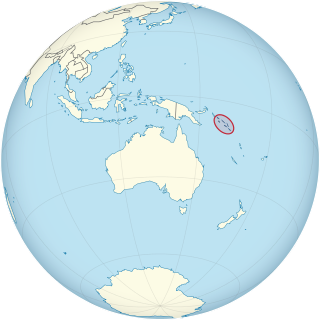
US Naval Base Solomons was a number of United States Navy bases in the Solomon Islands in the Pacific Ocean. Most were built by the US Navy Seabees, Naval Construction Battalions, during World War II as part of the Pacific War. In August 1942 the United States Armed Forces took the Guadalcanal in the Solomon, in the Battle of Guadalcanal. US Navy Seabees built a new base at Guadalcanal, Naval Base Guadalcanal and then on other islands in the Solomons.
7°34′S158°43′E / 7.567°S 158.717°E